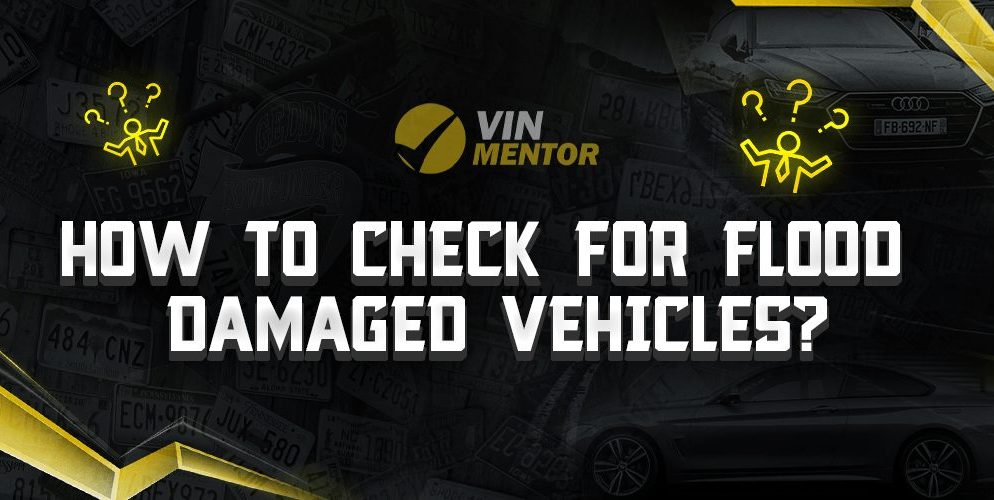

Discovering whether a used vehicle has been damaged by floods is crucial to avoid potential future headaches and expenses. Flood damaged vehicles can have hidden issues that may compromise their safety and performance. In this article, we will delve into the key steps you can take to check for flood damage before purchasing a used vehicle. Read on to gain valuable insights and ensure you make an informed decision.
Key Takeaways
- Conduct a detailed visual inspection of the exterior and interior to identify potential clues of flood damage, such as water lines, rust, stains, and mismatched materials.
- Pay attention to unusual odors, particularly musty or damp smells, which may indicate mold and mildew growth caused by flood damage.
- Assess the vehicle’s electrical components by testing all features and looking for warning lights on the dashboard that could indicate electrical issues.
- Seek professional assistance to ensure a thorough evaluation, including specialized inspections and diagnostic tests to identify hidden issues.
- Perform a VIN check using reputable websites or services to access a comprehensive vehicle history report and look for indications of flood damage, such as salvage titles or insurance claims.
Visual Inspection: Identifying Potential Clues
When examining a vehicle for flood damage, the first step is a detailed visual inspection. By scrutinizing the exterior and interior, you can identify potential clues that may hint at water-related issues. Some key areas to focus on include:
Exterior
- Check for water lines or watermarks on the body, undercarriage, and engine components.
- Look for signs of rust, particularly in hidden areas such as the wheel wells.
- Inspect the headlights and taillights for moisture or fogging.
Interior
- Examine the upholstery and carpeting for stains, discoloration, or a damp smell.
- Check for signs of mud, silt, or debris in the trunk, glove compartment, and under seats.
- Inspect the dashboard for water damage, such as peeling or mismatched materials.
Unusual Odors: Sniffing Out Potential Issues
Flood damaged vehicles often retain distinctive smells caused by mold and mildew growth. To detect these odors:
- Take a deep breath inside the vehicle and pay attention to any musty or damp smell.
- Inspect the air vents and listen for unusual noises, which may indicate water damage.
Electrical Components: Assessing Potential Problems
Flood damage can severely affect a vehicle’s electrical system. When inspecting the electrical components:
- Test all electrical features, including windows, locks, lights, and audio systems.
- Look for warning lights on the dashboard, as these could indicate electrical issues.
- Consider hiring a professional mechanic to conduct a comprehensive electrical inspection.
Seeking Professional Assistance: Expert Evaluation
While you can perform several checks yourself, seeking professional assistance is essential to ensure a thorough evaluation. Experts can provide a more comprehensive assessment by:
- Conducting a detailed inspection using specialized tools and equipment.
- Utilizing diagnostic tests to identify hidden issues within the vehicle’s systems.
- Offering valuable insights and advice based on their expertise.
Performing a VIN Check: Confirming the Vehicle’s History
Conducting a VIN check is a crucial step in determining if a vehicle has experienced flood damage. By obtaining a comprehensive vehicle history report, you can gather valuable information, including any reported incidents of flood damage. Here’s how you can perform a VIN check:
- Use reputable VIN check websites or services recommended by industry experts.
- Enter the vehicle’s unique VIN to access the vehicle history report.
- Review the report for any indications of flood damage, such as salvage titles or insurance claims related to water damage.
- Consider cross-referencing the information from multiple sources to ensure accuracy.
By combining a thorough visual inspection, checking for unusual odors and electrical issues, seeking professional assistance, and conducting a VIN check, you can significantly reduce the risk of purchasing a flood-damaged vehicle. Investing time and effort into these steps will help you make an informed decision, ensuring the reliability and safety of your used vehicle.
Conclusion
Purchasing a flood damaged vehicle can lead to significant financial and safety risks. By following the key steps outlined in this article, you can improve your ability to identify potential flood damage indicators. Remember, when in doubt, seek the help of professionals who can perform thorough inspections. Additionally, consider utilizing VIN check through our recommended VIN Check Websites to gain a comprehensive understanding of the vehicle’s history. Making informed decisions will save you from future troubles and ensure a satisfying ownership experience.
FAQ
How can I tell if a car has been damaged by a flood?
There are several indicators of flood damage, such as water lines, rust, stains, musty odors, electrical issues, and mismatched materials. Conducting a thorough visual inspection, checking for unusual odors, and assessing electrical components can help identify potential flood damage.
Can flood-damaged cars be repaired and made safe to drive?
In some cases, flood-damaged cars can be repaired and restored to a safe driving condition. However, the extent of the damage and the effectiveness of repairs can vary. It’s crucial to consult with professionals and assess the overall condition of the vehicle before considering its safety and drivability.
Is a vehicle with flood damage worth buying at a significantly lower price?
Purchasing a flood-damaged vehicle at a lower price can seem tempting, but it comes with inherent risks. Extensive damage may lead to ongoing issues and expensive repairs. Consider the potential long-term expenses, safety concerns, and the overall value of the vehicle before making a decision.
Can a vehicle history report always detect flood damage?
While a comprehensive vehicle history report obtained through a VIN check can provide valuable information, it may not always reveal flood damage. Some incidents may go unreported, or the vehicle may have been repaired without any official record. It’s important to combine a vehicle history report with a thorough visual inspection and professional evaluation for a more comprehensive assessment.
Are there specific VIN check websites or services recommended for checking flood damage?
There are several reputable VIN check websites and services available that can help you uncover information about a vehicle’s history, including flood damage. It’s recommended to use trusted sources recommended by industry experts to ensure accurate and reliable information. Research and read reviews to find the most reliable options for your needs.












